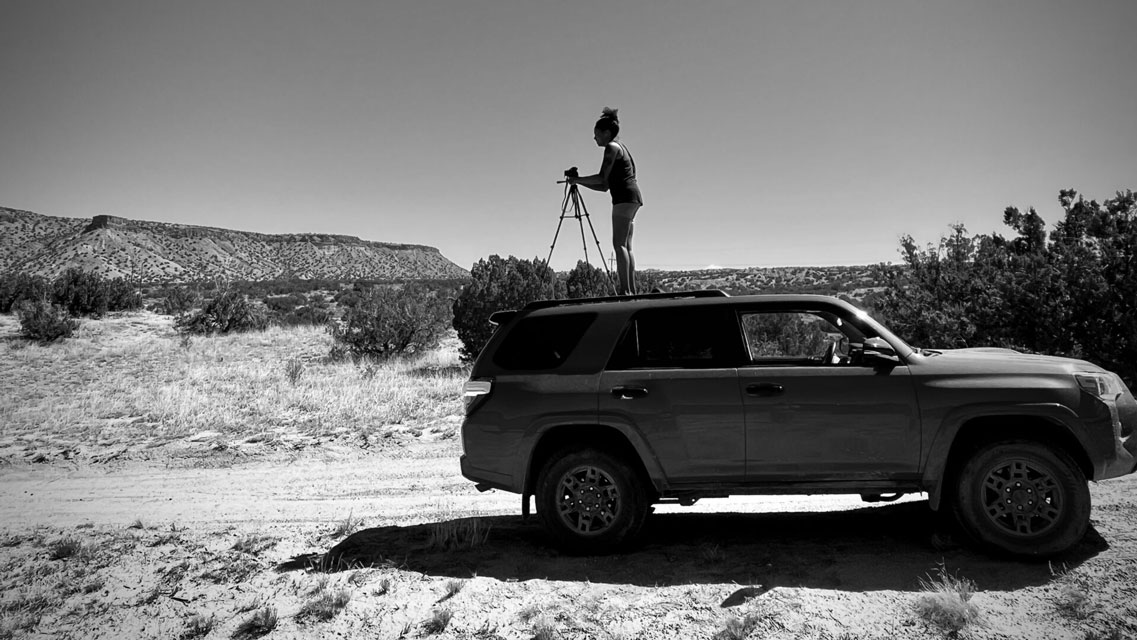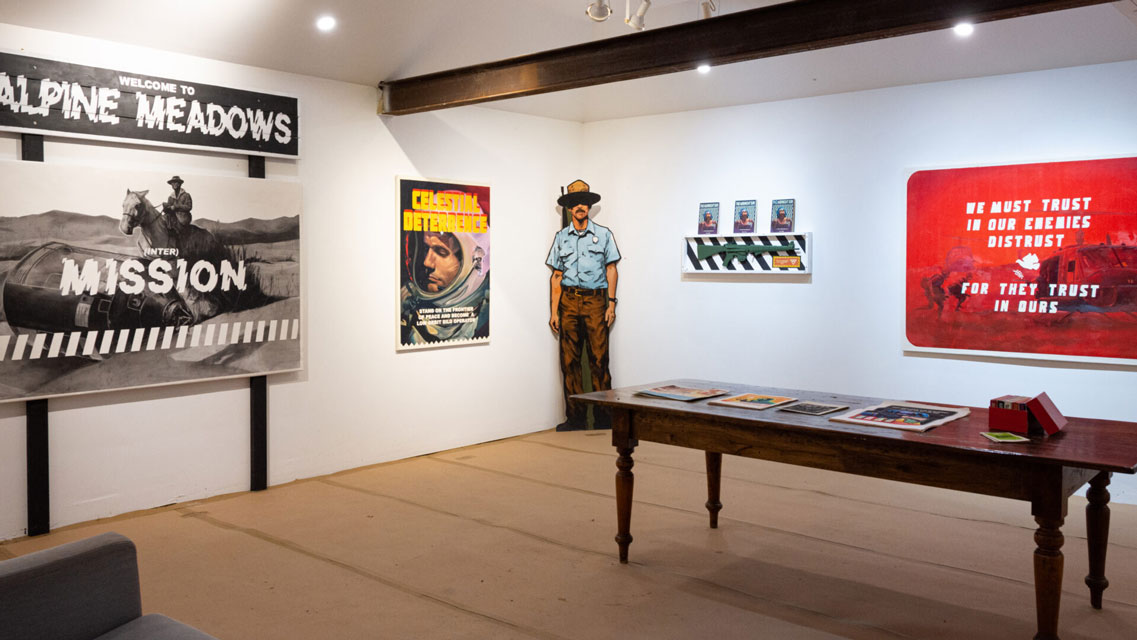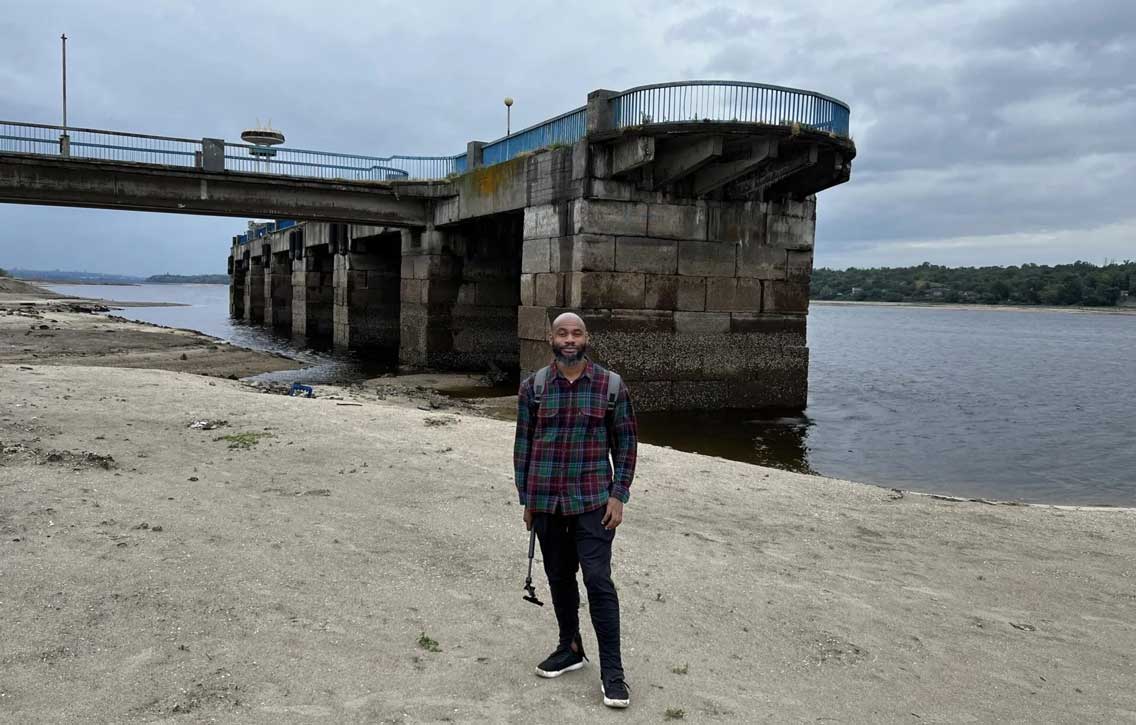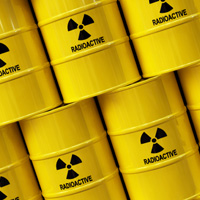Inkstick Media’s Creative Capsule Residency brings creativity and storytelling to nuclear issues.
Cultivating diversity and empowering new voices in the nuclear field is an important part of our Nuclear Challenges capstone project, which aims to foster a stronger nuclear field as we conclude our Nuclear Challenges Big Bet. As part of our capstone, we have supported Inkstick Media’s Creative Capsule Residency. This eight-month program for journalists, artists, and international security experts encourages participants to embrace experimentation, creativity, and storytelling.
The first cohort—which included a journalist covering Russia’s invasion of Ukraine, a nonproliferation expert and filmmaker, and a portrait artist—completed their residency in 2023. Their personal reflections follow.

Nuclear engineer and filmmaker Dr. Chantell Murphy explored the connection between nature and nuclear weapons during her Creative Capsule Residency. Photo credit: Dr. Chantell Murphy
Dr. Chantell Murphy, Nuclear Nonproliferation Expert and Filmmaker
My overarching goal with my Creative Capsule Residency project was to find a way to bridge the gap between nuclear communities and outdoor recreation communities, so new voices and perspectives will be compelled to join the conversation. I wanted to highlight these unseen connections in new and interesting ways.
I did not have a grand artistic vision going into the residency, but I was inspired by science and tech videos on social media, so I thought that could be interesting to pursue. The residency connected me with filmmaker and producer Laura Yale, who was very excited about the project, and together we concluded I should make a short documentary that shows the landscapes around nuclear sites and how people recreate around them. The film, Projecting Y, will focus on rock climbing near Los Alamos National Laboratory, and it will show my experience trying to reconcile my work related to nuclear weapons while also trying to prioritize equity and justice in my life and work.
This residency was transformative for me. It was the first time I really got to use my own voice and opinions to make observations about the world, and that is really scary. But my vulnerability will allow people to connect with the issues I care about and empower them to find their own connection to nuclear weapons and how we impact the land and people when we spend time in remote places. I love being a part of the movement to change how we talk about nuclear issues and who gets to do this work.

Work created by Creative Capsule Resident and Montreal-based artist Whit Montgomery. Photo credit: Inkstick Media
Whit Montgomery, Portrait Artist
My practice focuses on drawing, painting, printmaking, and digital collage, all thematically based around propaganda and its ability to influence. Ever since I was young, I had a fascination with the ability of art to sway opinions.
I became interested in nuclear policy and nuclear weapons while taking a course on the art history of Las Vegas. I found the influence of weapon testing on society in the 1950s and ‘60s in Las Vegas was quite profound, leaving me with an obsession on how people romanticize even the most horrible creations.
My Creative Capsule Residency project focused on encouraging people to apply a critical lens when digesting media surrounding weaponization to uncover the ways political actors twist and frame subjects to gain public approval. The residency gave me the opportunity to do a deep dive into the relationship between weaponization, propaganda, and the human psyche.
One of the biggest takeaways from the residency was the ability to collaborate and connect with so many knowledgeable people. I am so thankful that I had the opportunity to learn from so many experts from a range of fields and develop my ability to more deeply incorporate the viewpoints and knowledge of others in my artistic practice. Overall, I feel very lucky to have this opportunity. It has given me a great starting point for a serious art career.

Creative Capsule Residency participant Terrell Jermaine Starr standing on sand at the Dnieper River where water used to be in Zaporizhzhia, Ukraine on July 28, 2023. The water level at the river dropped drastically after Russia attacked/destroyed the Kakhovaka dam, causing an ecological disaster. Photo credit: Terrell Jermaine Starr
Terrell Jermaine Starr, Journalist
I applied to the Creative Capsule Residency because I wanted to have a space where I could figure out how to write about nuclear issues, the war in Ukraine, and Russia’s colonial violence in ways that help the common person become more engaged. The Creative Capsule Residency does a great job of creating an environment where you can explore this. It is something I am still figuring out because talking about nuclear is “gloom and doom.” It is not a dinner table conversation.
Elected officials and thinktanks don’t do a good job of explaining to Americans why they ought to care about nuclear issues, leaving Americans disinterested. So, the Creative Capsule Residency was a way for me to take time to figure out how to address that and to learn how to create content that reaches people.
This residency made me think more deeply about how we communicate. We want to have clean-cut answers to questions, but they do not exist. The beauty of living in Ukraine is that the ways in which I write now have a new texture.




